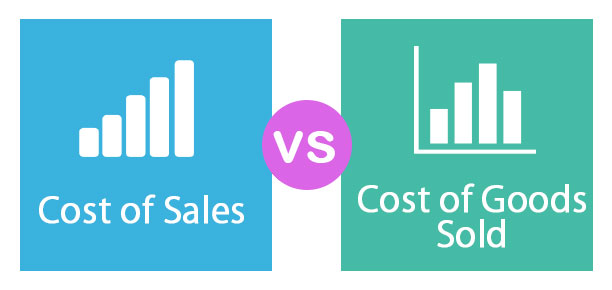How Are Cost of Goods Sold and Cost of Sales Different? 销货成本和销售成本有什么不同?
Companies refer to either the cost of goods sold (COGS) or the cost of sales on the income statement, or in some cases both, leading to some confusion for investors about the meaning and implication of the two terms. However, fundamentally, there is almost no difference between a company’s listed cost of goods sold (COGS) and cost of sales. The two terms are typically used interchangeably in an accounting context. 公司在损益表中要么是指商品销货成本(COGS),要么是指销售成本,在某些情况下两者兼而有之,导致投资者对这两个术语的含义和含义产生一些混淆。然而,从根本上说,公司的列出的销货成本(COGS)和销售成本几乎没有区别。这两个术语通常在会计上下文中互换使用。
The Cost of Producing a Product or Service 生产一种产品或服务的成本
Cost of sales, also known as the cost of revenue, and cost of goods sold (COGS), both keep track of how much it costs a business to produce a good or service to be sold to customers. Both the cost of sales and COGS include the direct costs associated with the production of a company’s goods and services. These costs include direct labor, direct materials, such as raw materials, and the overhead that’s directly tied to the production facility or manufacturing plant. 销售成本,也被称为收入成本,和商品销售成本(销货成本),两者都记录企业生产一种商品或服务卖给顾客的成本。销售成本和销货成本都包括与公司产品和服务的生产相关的直接成本。这些成本包括直接人工、直接材料(如:原材料)和直接与生产设施或制造厂相关的间接费用。
Why the Cost of Sales and COGS Matter 为什么销售成本和销货成本如此重要
The cost of sales and COGS are key metrics in cost analysis since they show the operational costs of the production of goods and services. If the cost of sales is rising while revenue has stagnated, it might be an indication that input costs have increased or other direct costs are not being appropriately managed. Cost of sales and COGS are subtracted from total revenue to yield gross profit. 销售成本和销货成本是成本分析中的关键指标,因为它们反映了产品和服务生产的运营成本。如果销售成本上升而收入停滞不前,这可能意味着投入成本增加或其它直接成本没有得到适当管理。销售成本和销货成本从总收入中减去以产生毛利润。
When to Use Each Term 何时使用每个术语
Retailers typically use the cost of sales, whereas manufacturers use the cost of goods sold. Since service-only businesses cannot directly tie any operating expenses to something tangible, they cannot list any cost of goods sold on their income statements. Instead, service-only companies typically show the cost of sales or cost of revenue. Businesses that might have no cost of goods sold include attorneys, painters, business consultants, and doctors. 零售商通常使用销售成本,而制造商使用销货成本。由于只提供服务的企业不能直接将任何运营费用与有形资产挂钩,因此他们不能在损益表上列出销售商品的任何成本。相反,只提供服务的公司通常会显示销售成本或收入成本。可能没有销货成本的企业包括:律师、油漆工、商业顾问和医生。
Some service providers offer secondary products to their customers; for example, airlines offer food and beverages, and some hotels sell souvenirs. The costs associated with these items can also be listed as cost of goods sold. 一些服务供应商为客户提供二次产品;例如:航空公司提供食品和饮料,一些酒店出售纪念品。与这些项目相关的成本也可以列成销售成本。
KEY TAKEAWAYS关键要点
- Both the cost of sales and the cost of goods sold (COGS) measure the amount a business spends to produce or manufacture a good or service for sale to its customers. 销售成本和商品销售成本(销货成本)都是衡量一个企业为生产或生产一种商品或向顾客销售一种服务而花费的金额。
- The terms are basically interchangeable and include the cost of labor, raw materials, and the overhead costs that are associated with running the production facility. 这些术语基本上是可互换的,包括劳动力成本、原材料成本和与生产设施运行相关的管理成本。
- Retailers, like toy stores, use the cost of sales, while manufacturers, like an auto parts supplier, use the cost of goods sold, since businesses that are service only can’t list tangible items as operating expenses. 像玩具店这样的零售商使用销售成本,而像汽车零部件供应商这样的制造商则使用销货的成本,因为只提供服务的企业不能将有形物品列为成本的则使用经营费用。
- Both terms are key reads on profitability—higher costs with flat revenue could mean costs are poorly managed, while higher costs and higher revenue, or flat costs and higher revenue, can imply good management. 这两个术语都是盈利能力的关键指标——更高的成本和更低的收入可能意味着成本管理不善,而更高的成本和更高的收入,或更低的成本和更高的收入,可能意味着较好的管理。

